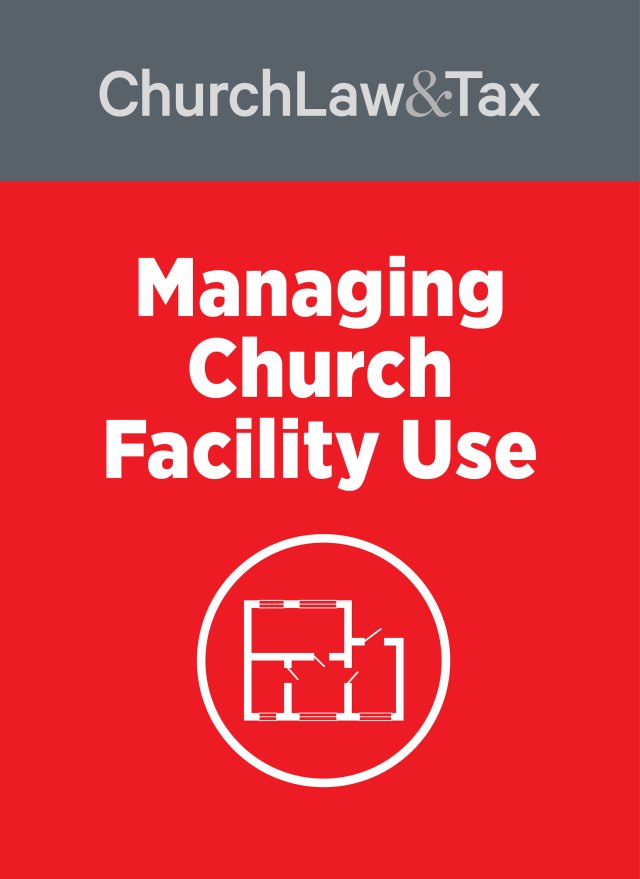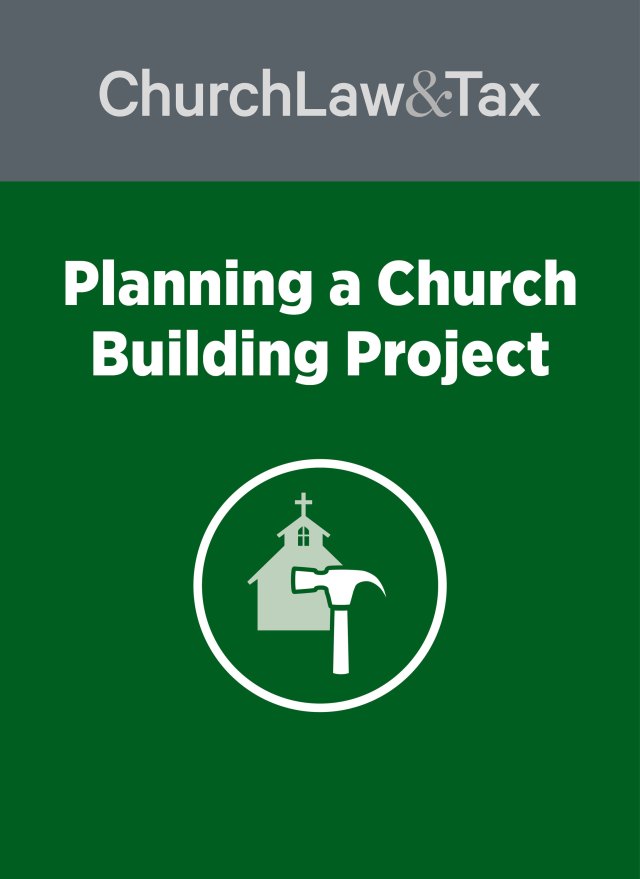Kenyon v. Abel, P.3d (Wyo. 2002)
Background. As a church treasurer, you may think that you know everything there is to know about conversion. After all, isn't it simply a matter of an unbeliever coming to faith in the redemptive work of Christ? While this may be true theologically, the word "conversion" has an entirely different meaning from a legal perspective, and this is the meaning that is addressed in this article.
A recent case. Whenever property is donated to a church, there is a possibility of a mistake in the valuation of that property by either the donor or the church. The tax code has greatly reduced the risk of overvaluations of donated property through more rigorous substantiation requirements. But occasionally, donated property may be substantially undervalued, and this can lead to unexpected consequences, as a recent case illustrates.
A woman (Ruth) was a friend of the artist Bill Gollings, whose works were known for their accurate portrayal of the Old West. Sometime before his death in 1932, Gollings gave one of his paintings to Ruth. The painting depicted a Native American on a white horse in the foreground with several other Native Americans on horses in the background traveling through a traditional western prairie landscape. The painting remained in Ruth's home until her death in 1999. At that time, the painting had a market value of $15,000.
After Ruth's death, her sole heir (Ron) inherited all of her personal belongings, including the painting. Ron sorted through Ruth's belongings and selected various items he kept for himself. All of the remaining items were donated to a local church or taken to an antiques dealer for auction, depending on their value. The painting was packed in a box marked for delivery to Ron's home. However, this box was inadvertently picked up with the donated items by the church. Unaware of the paintings value, the church priced it at $25 and offered it for sale in a thrift store that it operated. The painting was immediately purchased for $25 by a third party (Mike).
Ron later discovered that the box containing the painting was not among those delivered by the moving company to his home. He later learned that the painting had gone to the church and was purchased by Mike. When he asked Mike to return the painting, Mike replied that he had "no knowledge" of the painting. Unsuccessful in his attempts to talk with Mike about the painting, Ron filed a lawsuit in which he sought possession of the painting. Mike insisted that he was a "good faith purchaser" of the painting under the Uniform Commercial Code (UCC). The trial court concluded that Ron never intended to give the painting to the church, and therefore he was entitled to possession of the painting under either the common law doctrines of gift or conversion, or the UCC. Mike appealed.
The court's ruling. A state appeals court began its opinion by noting that "the key to resolving this dispute is determining whether or not the painting was voluntarily transferred from Ron to the church." The court agreed with the trial court's conclusion that the Ron never intended to give the painting to the church. It relied on Ron's testimony that (1) his aunt often expressed to him the importance of the painting and her desire that it remain in the family's possession; (2) the painting had a lot of value to him and the family beyond its monetary worth because of his family's personal relationship with the artist; and (3) his aunt rejected at least one offer to buy the painting for $5,000.
Further, the court noted that on the day the painting was packed for moving, there was considerable confusion in Ruth's home as her nephew attempted to sort through all of her possessions as quickly as possible so that he could return to his home in another state and go back to work. It was amidst this confusion that a church employee came to the house to pick up items that were being donated to the church. The employee inadvertently picked up the painting along with the donated items, and took them to the church. Ron insisted that he did not intend to include the painting with the goods that were meant to go to the church, and had no idea that the painting had been taken by someone from the church. Upon returning home and finding that the painting was missing, Ron immediately traced the painting from the church to Mike.
Gift
This evidence convinced the court that Ron had no intention of donating the painting to the church, and so it rejected Mike's argument that possession of the painting had lawfully been transferred to the church by "gift" and therefore the church had the legal authority to sell it at whatever price it chose. The court pointed out that "a valid gift consists of three elements: (1) a present intention to make an immediate gift; (2) actual or constructive delivery of the gift that divests the donor of dominion and control; and (3) acceptance of the gift by the donee." The court concluded, "The pivotal element in this case is the first one: whether an intention to make a gift existed. We agree with the trial court that Ron did not have any intent to donate the painting to the church. Therefore, the trial court correctly ruled that the transfer of the painting to the church did not constitute a valid gift."
Conversion
The court then turned its attention to the legal doctrine of "conversion." It noted that "conversion occurs when a person treats another's property as their own, denying to the true owner the benefits and rights of ownership." To establish a conversion, one must show that:
(1) he had legal title to the converted property; (2) he either had possession of the property or the right to possess it at the time of the conversion; (3) the defendant exercised dominion over the property in a manner which denied the plaintiff his rights to use and enjoy the property; (4) in those cases where the defendant lawfully, or at least without fault, obtained possession of the property, the plaintiff made some demand for the property's return which the defendant refused; and (5) the plaintiff has suffered damage by the loss of the property.
The court concluded that the sale of the painting constituted conversion by the church, since (1) as the heir to his aunt's estate Ron had legal title to the painting; (2) Ron possessed the painting at the time it was removed from his aunt's residence; (3) the church exercised dominion over the property in such a manner that denied Ron the right to enjoy and use the painting, i.e., it sold the painting; (4) Ron demanded the return of the painting from Mike, who refused to do so and denied any knowledge of it; and (5) Ron has suffered damages through the loss of a valuable asset without compensation. As a good faith purchaser of converted property, Mike was also a converter and was liable to the true owner. This is so because a converter has no title whatsoever (i.e., his title is void) and, therefore, nothing can be conveyed to a bona fide purchaser for value.
The court stressed that its conclusion that the church had converted the painting "is not to imply any wrongdoing on the part of the church, which the record indicates acted entirely in good faith. A conversion is predicated on a deprivation of an owner's right to exercise dominion over his property and not on any specific intent to commit a wrongful act."
UCC
Mike sought to escape the consequences of the common law doctrines of gifts and conversion by arguing that the UCC is the controlling law. He claimed that under the UCC he was entitled to ownership of the painting since he was a "good faith purchaser" of it. The court disagreed, noting that "the good faith of a purchaser is not a defense to an action for conversion under the common law or the UCC if the true owner never consented to the transfer of the goods to the person from whom the good faith purchaser bought them."
What this means for churches
Church treasurers should be familiar with the legal doctrine of conversion. Stated simply, conversion occurs whenever one deprives another of lawful possession of his or her property, even if through ignorance or inadvertence. The court in this case concluded that the church converted Ron's painting by accepting possession of it without Ron's knowledge, even though it had no way of knowing that it was not Ron's intent for the church to have it. If the church sold converted property to an innocent purchaser having no knowledge of the church's conversion, the purchaser also became a converter. Whoever is in control of property through conversion (whether the church or a subsequent purchaser) can be legally compelled to transfer possession of the converted property back to the rightful owner.
If a church obtains possession of property through conversion, and later sells it to a third party at a substantial price, the third party may be able to sue the church for damages if it is later compelled to return the property to the rightful owner. After all, the third party has paid the purchase price to the church, and has been deprived of the property. Such complications indicate the importance of taking steps to insure that donors are knowingly and intentionally transferring possession of their property when they make what appear to be "gifts" to the church. In most cases, churches know the donor personally, and so the problem of conversion is greatly minimized. When dealing with persons who are unknown to you (such as the heirs of a deceased member) it would be prudent to obtain a letter from the donor acknowledging his or her intent to donate the property to the church. Such a letter will minimize the risk of conversion, and the legal complications and liability that may occur if the church subsequently sells converted property to an innocent third party.




